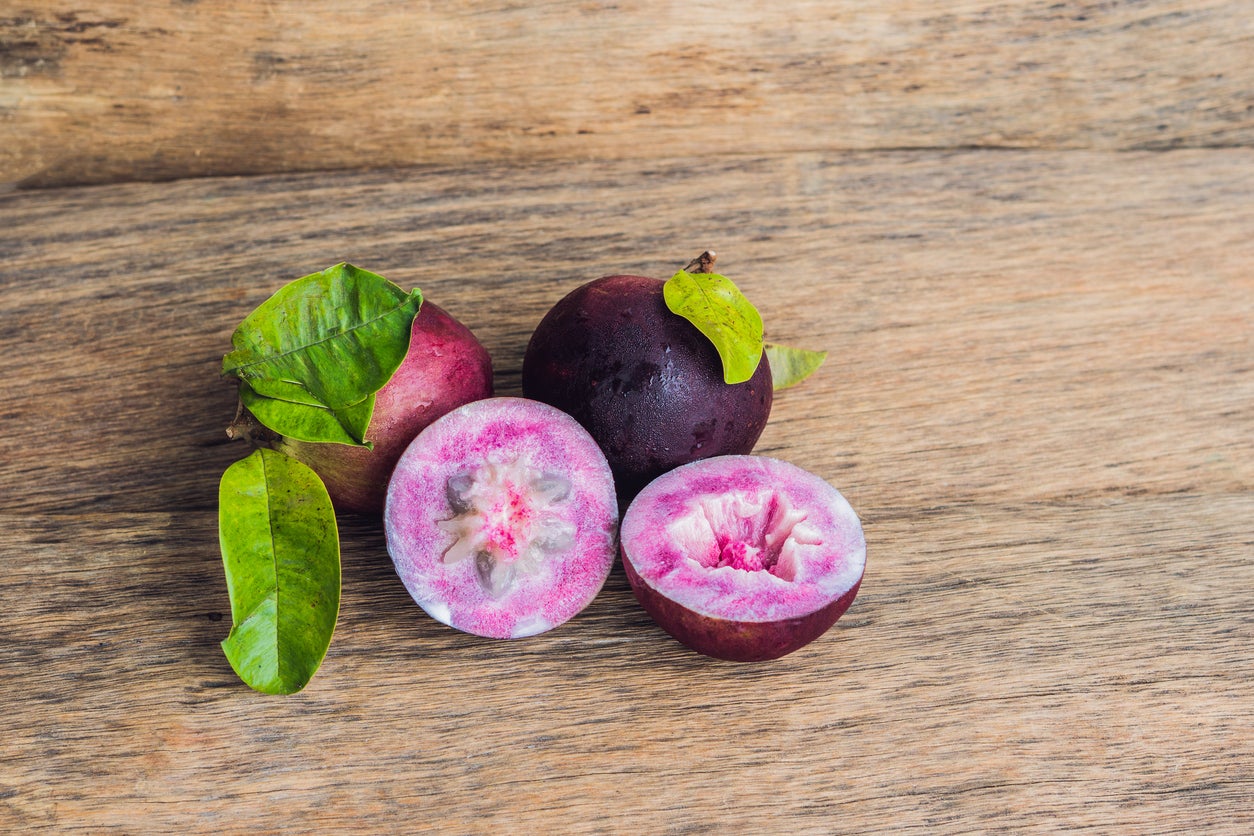Star Apple Info – How To Grow A Cainito Fruit Tree


The cainito fruit tree (Chrysophyllum cainito), also known as star apple, is not really an apple tree at all. It is a tropical fruit tree that grows best in warm zones without frost and freeze. Possibly originating from Central America, it grows well throughout the tropical West Indies, the Pacific and Southeast Asia, and even thrives in Hawaii and parts of Florida. Read on to learn more about this interesting fruit tree.
What is a Star Apple?
If you look at pictures, you’ll find that this fruit is similar to a plum. When sliced in half, however, an unusual star pattern is visible in the center of the fruit, hence the name. This pattern makes the fruit popular for high-end desserts. The fruit is tasty, containing a milky juice used in smoothies and other culinary endeavors. Ripened fruit is yellow, golden, or purple on the outside, depending on cultivar. The fruit is round with juicy white or pink flesh, tasting sweet and unique. Its outer peel, though, is not edible. Green on one side, leaves are gold on the other, giving the additional name of golden leaf tree. Cainito tree cultivation in the U.S. is normally not a commercial endeavor, but is left to the homeowner and those with small orchards, according to star apple info. Some have escaped cultivation and grow along roadsides in warmer areas.
Cainito Tree Cultivation and Care
According to star apple info, trees will grow anywhere in the U.S. if indoor protection can be provided at 40 degrees F. (4 C.) and below. Temperatures below freezing damage the tree. Not a fan of salty air and sea spray, this is not the best fruit tree to grow near the ocean. While the tree is attractive, it requires substantial pruning to grow as a single liter tree. Problems such as fruit not dropping when ripe are reported. Those growing in the Philippine Islands are known to suffer from stem-end decay. Appropriate cainito star apple care is necessary to keep trees healthy and producing quality fruit. Trees grow quickly, whether in ground or in a large container. Healthy trees may produce edible fruit as quickly as the third year. Trees can grow from seed, taking longer to develop and up to ten years to produce. Propagation by air layering or grafting is often most successful. These trees need lots of room in the sunny landscape. If you’ll grow one in the ground, allow 10 feet (3 m.) or more without other trees. Provide the same type of location needed for all healthy fruit trees– loamy, amended soil on raised ground. Add a trench around the outside of the planting spot to hold water occasionally while establishing the root system. Winter fungicide sprays are important for the productive harvest. It you’re attempting to grow organic fruit, take a look at using horticultural oils and insecticidal soaps instead.
Sign up for the Gardening Know How newsletter today and receive a free copy of our e-book "How to Grow Delicious Tomatoes".

Becca Badgett was a regular contributor to Gardening Know How for ten years. Co-author of the book How to Grow an EMERGENCY Garden, Becca specializes in succulent and cactus gardening.